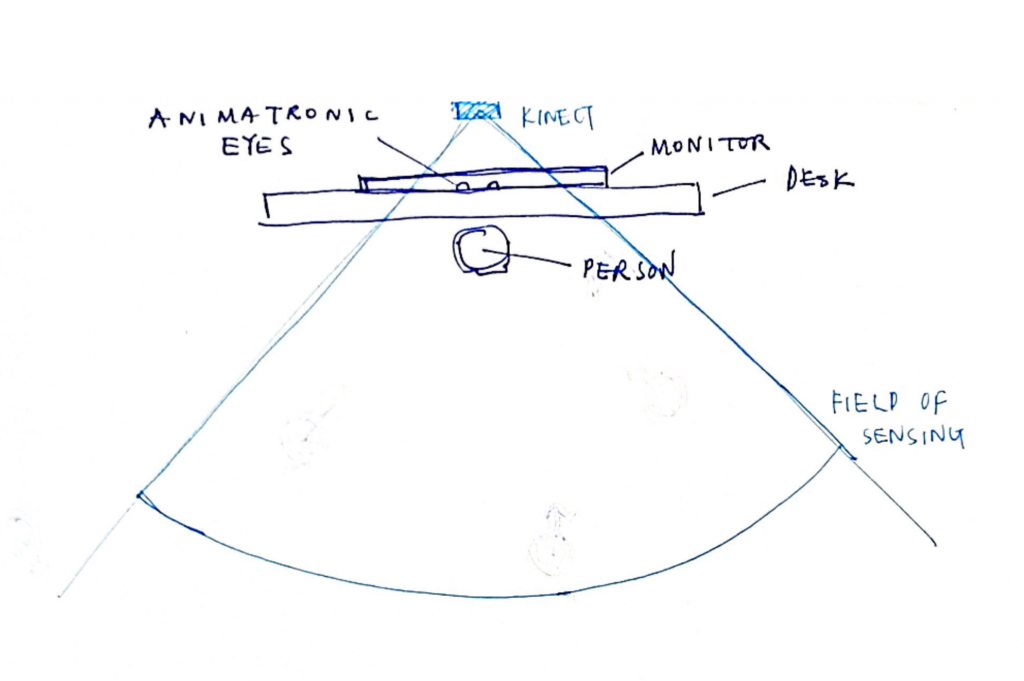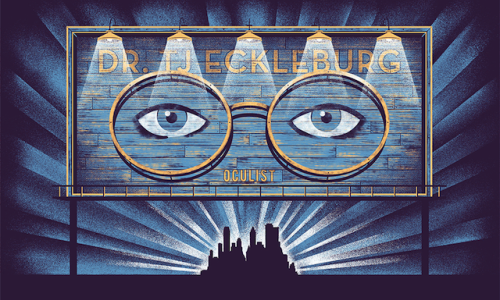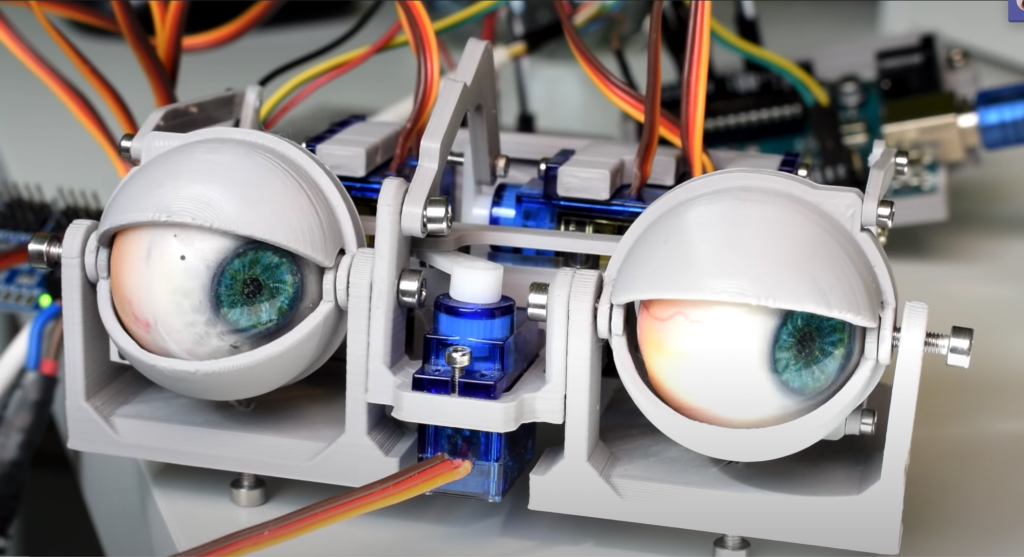Problem:
One of the greatest pains when working in an open office is not knowing if/when someone is coming up behind you to speak to you. Because of how impersonal the giant office space can be, people often wear headphones (particularly noise cancelling headphones) to create a personal sensorial bubble where you are enveloped in your own ambient soundscape.
Often, because of how desks are arranged in long rows, the only way that someone can approach you when wanting to speak to you is from behind or the side, where your peripheral vision does not reach. Given that we can’t see who’s behind us (and now can’t hear) we often get startled, shocked or surprised by incoming people.
Solution:

By installing a Kinect on top of the monitor, we can tell when someone is approaching and entering your personal space, ostensibly to try to talk to you.
This gives us information on the direction that they’re approaching at (from the left or the right) and how near they are.
To communicate this information, I’m going to use a pair of animatronic eyes that will be installed atop the desk monitor. The reason being that this is close enough to eye level that it won’t be obtrusive, but any movement would be easily registered since I’d be looking in that direction most of the time.
Eyes are an incredibly expressive part of human language, and can convey lots of nuances even with the slightest inflections. This idea is inspired by the eyes on the billboard in The Great Gatsby, where the sense of being watched / seen invokes a different emotional response in the viewer.

If there’s no one within the space, the eyes remain closed.

If someone comes close enough to your left side, the eyes will open and look to the left. Ideally, it’s supposed to mirror the interaction if you were sitting across someone at a diner and they see someone approaching you from behind.

Similarly, when someone approaches from the right, the eyes will open and look to the right.